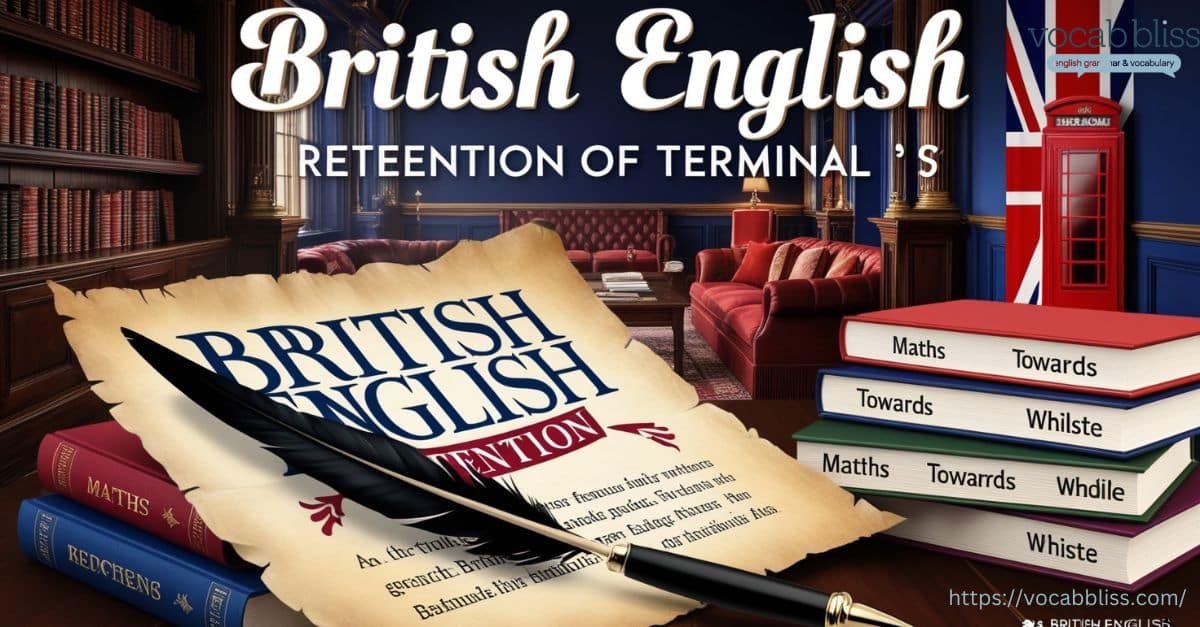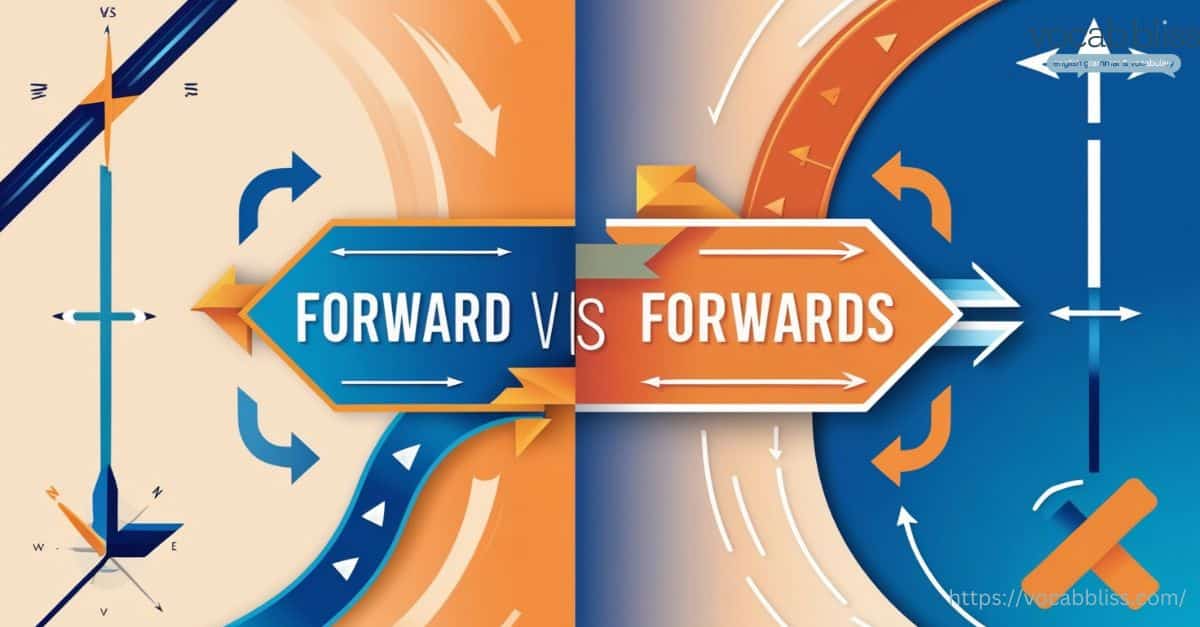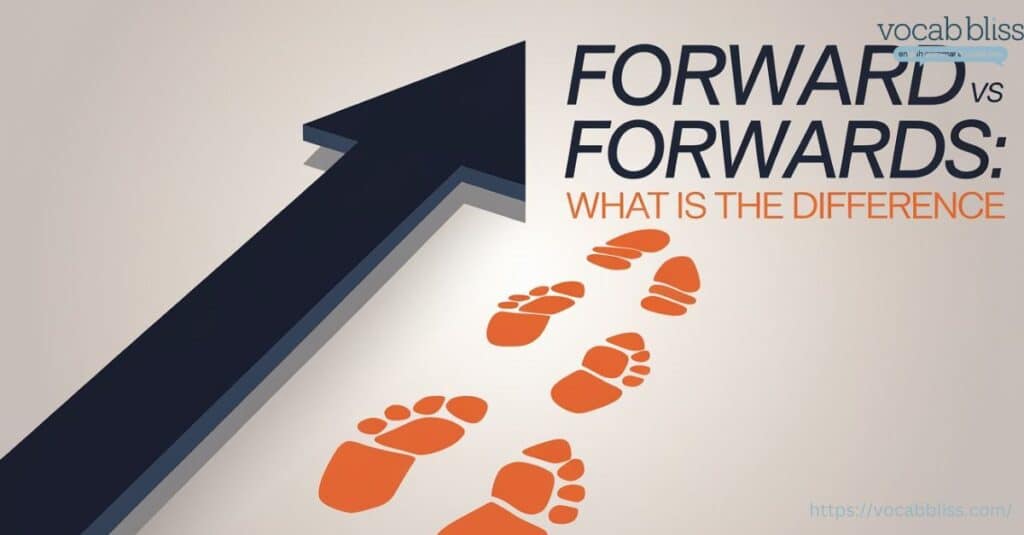The English language is filled with words that cause confusion, and “forward vs forwards” is one such pair. Although they seem similar, their usage differs depending on context, region, and grammatical structure. If you’ve ever wondered about the difference between these words and how to use them correctly, this comprehensive guide will clarify everything.
Quick Summary
The terms “forward vs forwards” often confuse English speakers due to their similar meanings and overlapping usage. The key difference lies in their regional preferences and grammatical functions. While “forward” is versatile, acting as an adjective, adverb, or verb in both British and American English, “forwards” functions solely as an adverb and is more commonly used in British English. American English simplifies usage by predominantly favoring “forward” across contexts. Understanding these distinctions—along with examples, historical evolution, and regional preferences—can help writers and speakers use these words correctly, whether navigating literal directions or figurative progress.
Read More: Is it Heel vs Heal: Grasping the Difference?
Why Is There Confusion?
The confusion between “forward vs forwards” stems from a combination of historical evolution, regional influences, and their overlapping meanings. Although the two words have distinct uses, centuries of linguistic changes and differing regional preferences have blurred the lines for many English speakers.
Historical Evolution of the Terms
Both “forwards vs forward” originated from Old English. “Forward” comes from the Old English term forweard, a combination of fore (meaning “ahead” or “before”) and -weard (a suffix indicating direction). Similarly, “forwards” derives from forweardes, with the -s suffix historically marking it as an adverb.
Over time, the distinction became less rigid, and both words came to describe directional movement or metaphorical progress. However, while “forward” expanded into multiple grammatical roles (adjective, adverb, and verb), “forwards” remained strictly an adverb.
Influence of Regional English (British vs American)
Regional preferences in British and American English have further muddied the waters:
- British English: Retains “forwards” for adverbial usage, following its historical form. This aligns with other British “-s” adverbs like towards and afterwards.
- American English: Prefers “forward” in nearly all contexts, simplifying usage by dropping the adverbial “-s.” This tendency reflects the broader American preference for linguistic streamlining.
For example:
- British English: The child ran forwards toward the playground.
- American English: The child ran forward toward the playground.
Overlapping Meanings Leading to Interchangeable Use
Adding to the confusion, “forwards vs forward“ often convey the same idea of motion or progress. In many cases, the choice between them doesn’t alter the meaning of a sentence. For instance:
- She moved forward to the stage.
- She moved forwards to the stage.
Both sentences are grammatically correct, but their subtle differences in tone or formality may go unnoticed.
What Does “Forward” Mean?
The word “forward” is incredibly versatile in the English language. It serves as an adjective, adverb, and even a verb, each with distinct meanings and applications. Beyond its basic directional sense, “forward” also carries metaphorical and figurative meanings, making it essential in both formal and informal communication.
Primary Definitions of “Forward”
- Adjective
- Refers to something positioned ahead or directed toward the front. It can also describe progressive or advanced thinking.
- Examples:
- The forward section of the ship is reserved for cargo.
- Her forward-thinking approach revolutionized the industry.
- Adverb
- Indicates motion or direction toward a point ahead. This usage is often related to physical or metaphorical progress.
- Examples:
- Please step forward and introduce yourself.
- The project is moving forward or moving forwards despite the challenges.
- Verb
- Means to send or transmit something, such as a message, document, or object, to another place or person.
- Examples:
- Could you forward this email to the marketing team?
- The package was forwarded to the client’s new address.
Explanation of Non-Directional Uses
While “forward” is often associated with movement, it is frequently used in non-directional, abstract contexts:
- Forward-thinking: Describes a mindset or approach that focuses on innovation and future possibilities.
- Example: His forward-thinking policies set a benchmark for others to follow.
- Look forward to: An idiom expressing excitement or anticipation.
- Example: I look forward to meeting you at the conference.
- Going forward: A common phrase in business communication to emphasize future plans or actions.
- Example: Going forward, we aim to increase customer satisfaction.
Examples of “Forward” in Context
Here are some sample sentences demonstrating its various uses:
As an Adjective:
- The forward cabin of the airplane is for first-class passengers.
- Her forward attitude sometimes came across as overly confident.
it is As an Adverb:
- He leaned forward to pick up the dropped keys.
- The initiative will move forward once we receive funding.
As a Verb:
- Please forward this document to the legal department for review.
- All calls will be forwarded to voicemail after 6 PM.
The adaptability of “forward” across different roles makes it a staple in English communication. Its versatility not only enhances precision but also enables nuanced expression across various contexts.
What Does “Forwards” Mean?
Unlike the multifunctional “forward and forwards” is used exclusively as an adverb. Its primary purpose is to emphasize movement or direction, either literally or metaphorically, toward a particular goal or point ahead.
Definition as an Adverb
“Forwards” signifies motion in a forward direction. This usage is more common in British English, where the addition of the “-s” suffix aligns with other adverbs like towards or afterwards. However, in American English, “forward” is often used in place of “forwards”, even in adverbial contexts.
- Example:
- The athlete ran forwards to cross the finish line.
Explanation of Directional Emphasis
The word “forwards” is primarily associated with physical or figurative motion:
- Physical Motion: Refers to movement toward the front or an intended direction.
- Example: She stumbled forwards but quickly regained her balance.
- Figurative Motion: Describes progress or advancement in an abstract sense, such as achieving goals or planning for the future.
- Example: The company is looking forwards to a profitable quarter.
“Forwards” is also often used for added emphasis when describing dynamic action or deliberate motion, particularly in British English.
Examples of “Forwards” in Action

Here are illustrative sentences to clarify the use of “forwards”:
- He took a step forwards and introduced himself to the audience.
- The chess player moved the pawn forwards to strengthen her position.
- She leaned forwards to listen closely to the speaker.
- The hikers pressed forwards despite the challenging weather conditions.
The exclusive adverbial role of “forwards” makes it simpler to use compared to “forward”, but its application is more limited. This distinction is especially important when considering regional English preferences and writing conventions.
Forward vs Forwards: Key Differences
Although “forwards vs forward“ share overlapping meanings, they diverge in usage, tone, and regional preferences.
Usage in Different English Variants
- American English: Prefers “forward” in both formal and informal contexts.
- British English: Frequently uses “forwards,” especially in casual conversation.
Common Contexts Where Each Is Used
- “Forward”: Often appears in formal contexts or as part of business jargon (e.g., “looking forward”).
- “Forwards”: More common in storytelling or directional instructions (e.g., “lean forwards”).
Forward vs Forwards: Key Differences
Though “forward vs forwards” often overlap in meaning, they differ in usage based on context, regional preferences, and formality. Understanding these nuances can help you use the right term confidently.
Usage in Different English Variants
Regional variations between British and American English play a significant role in how “forward vs forwards” are used:
- British English:
- Prefers “forwards” in casual or spoken contexts, especially when emphasizing movement or direction.
- “Forward” is often reserved for formal writing or as an adjective.
- Example:
- The children ran forwards to greet their teacher.
- The forward motion of the car startled the pedestrian.
- American English:
- Dominantly uses “forward” in both formal and informal contexts, simplifying the language by avoiding the “-s” form.
- Example:
- The car moved forward into the parking space.
- Looking forward to your reply.

This distinction reflects the broader British preference for “-s” adverbs (e.g., afterwards, towards) compared to the American tendency to drop the suffix.
Common Contexts Where Each Is Used
Understanding when to use “forward versus forwards” often depends on the specific context.
Navigational Contexts
Both terms are frequently used to describe movement, but there’s a subtle difference:
- “Move forward”: Common in American English, this phrase implies progress or advancing to the front, often in formal settings.
- Example: Please move forward in line to keep the queue organized.
- “Go forwards”: Favored in British English, this phrase emphasizes physical movement in casual contexts.
- Example: Go forwards until you see the sign for the library.
Figurative vs. Literal Applications
- Literal Use:
- Both words describe actual, physical motion, but “forwards” adds a dynamic sense of progression in British usage.
- Example:
- The train sped forwards through the tunnel. (British)
- The train moved forward through the tunnel. (American)
- Figurative Use:
- “Forward” is more common in metaphorical contexts, regardless of the variant. It often signifies abstract ideas like planning, progress, or innovation.
- Example:
- Let’s move forward with the project timeline.
- Her forward-thinking ideas inspired the entire team.
Summary Table: Forward vs Forwards
| Context | British English Usage | American English Usage |
|---|---|---|
| Formal Writing | Forward | Forward |
| Casual or Spoken Usage | Forwards | Forward |
| Literal Movement | Forwards | Forward |
| Figurative Progress | Forward | Forward |
By keeping these distinctions in mind, you can tailor your usage of “forward vs forwards” to the audience and context, ensuring clarity and adherence to regional norms.
The Role of British vs American English in Word Endings
The divergence between British English and American English often lies in their treatment of word forms, particularly adverbs. The difference in the use of “forward vs forwards” reflects broader trends in how each variant approaches terminal “s” in adverbs and the simplification of language.
British English: Retention of Terminal “s”

In British English, it’s common to retain the “s” at the end of certain adverbs, a practice rooted in historical usage patterns. This tradition preserves the language’s more descriptive qualities:
- Examples of Terminal “s” Usage in British English:
- Forwards: He walked forwards into the garden.
- Towards: They moved towards the city center.
- Afterwards: Afterwards, they celebrated at the pub.
This retention often emphasizes the dynamic or progressive nature of the action, aligning with the British preference for expressive linguistic forms in casual or narrative contexts.
American English: Simplification for Streamlined Usage
American English typically opts for more streamlined expressions, removing the terminal “s” in adverbs to simplify communication. This aligns with the broader goal of reducing complexity in spelling and grammar:
- Examples of Simplified Usage in American English:
- Forward: She leaned forward to grab the book.
- Toward: The group headed toward the monument.
- Afterward: Afterward, they went out for dinner.
This approach reflects the American tendency to prioritize clarity and efficiency in language, particularly in formal and professional settings.
Broader Patterns in Word Endings
The distinction between British and American English word endings extends beyond adverbs. Here are some examples:
| Term | British English Usage | American English Usage |
|---|---|---|
| Amongst vs Among | Amongst | Among |
| Whilst vs While | Whilst | While |
| Backwards | Common | Rare |
| Backward | Rare | Common |
Implications for Language Learners
Understanding these differences is crucial for effective communication:
- In British English: Using the terminal “s” in adverbs like “forwards” aligns with standard conventions and sounds more natural in informal speech.
- In American English: Dropping the “s” simplifies writing and adheres to modern usage norms, particularly in professional or academic contexts.
Grammatical Mechanics
Adverbial Considerations
Both words can function as adverbs, but “forward” is broader in application. For instance, “forward” can describe metaphorical progress (e.g., “move forward in life”), while “forwards” is strictly directional.
Contextual Deployment
- Forward: Used in abstract or metaphorical contexts, such as future planning.
- Example: We need to move forward with our project.
- Forwards: Primarily directional and literal.
- Example: She walked forwards into the forest.
Examples of “Forward vs Forwards” in Sentences
Sentences Using “Forward”
- He took a step forward to address the crowd.
- The company’s forward momentum impressed the stakeholders.
Sentences Using “Forwards”
- She leaned forwards to hear the speaker more clearly.
- The athlete dashed forwards, overtaking his competitors.
Which One Should You Use: “Forward or Forwards”?
Choosing between “forward vs forwards” depends on the context and the formality of your writing.
General Guidelines
- Use “forward” for formal contexts, abstract ideas, or when writing for an American audience.
- Use “forwards” for informal, conversational tone or when targeting British readers.
Tips for Writers
- When in doubt, stick with “forward,” as it is universally understood.
- Consider your audience and the tone of your writing before making a choice.
Synonyms for “Forward vs Forwards”

Synonyms of “Forward”:
- Ahead
- Onward
- Progressive
“Forwards” Synonyms:
- Ahead
- Onward
- Toward
Origins of “Forward” and “Forwards”
Both terms derive from Old English. “Forward” comes from “forweard,” combining “fore” (ahead) and “ward” (direction). Similarly, “forwards” has roots in “forweardes,” with the “-s” suffix signaling adverbial use.
Over time, regional differences in English shaped their modern usage.
FAQs
Do you say forward or forwards?
Both “forward vs forwards” are correct, but their usage depends on context and regional preference. “Forward” is more commonly used in American English for both formal and informal settings, while “forwards” is preferred in British English, especially in casual speech or writing.
Is it forward or forwards in the UK?
In the UK, “forwards” is often used in casual or spoken contexts to emphasize motion or direction. However, “forward” is equally valid and is typically chosen in formal writing or figurative expressions. For example:
- She stepped forwards to address the crowd.
- We must move forward with the project.
Is it look forward or forwards?
The correct phrase is “look forward”, as it is a figurative expression implying anticipation or eagerness for something in the future. Adding an “s” is incorrect in this context.
- I look forward to hearing from you.
Is it going forward or going forwards?
Both are grammatically correct, but “going forward” is more widely accepted in formal and figurative contexts, particularly in American English. “Going forwards” is less common but might appear in conversational British English when referring to physical motion.
- Going forward, we’ll prioritize customer feedback.
- The hikers kept going forwards despite the heavy rain.
What is the plural form of forward?
“Forward” does not have a plural form, as it is primarily used as an adjective, adverb, or verb. However, when used as a noun (e.g., in sports like soccer or basketball to refer to a player position), the plural would simply be “forwards.”
- The team’s forwards scored two goals in the match.
Conclusion
While “forwards or forward” may seem interchangeable, understanding their nuances can enhance your communication skills. Whether you’re writing formally, conversing casually, or navigating regional differences, knowing when to use looking forward or forwards” is essential for precise and effective language use. So, the next time you find yourself pondering “forward vs forwards,” remember these distinctions and make the right choice confidently!
Continue reading:
- How Do You Spell Christmas, Christmases, or Christmas’s?
- Analogy vs Allegory: What’s the Difference?
- is it Latter or Ladder: How to Use?
- Concave vs Convex: What’s the Difference?







